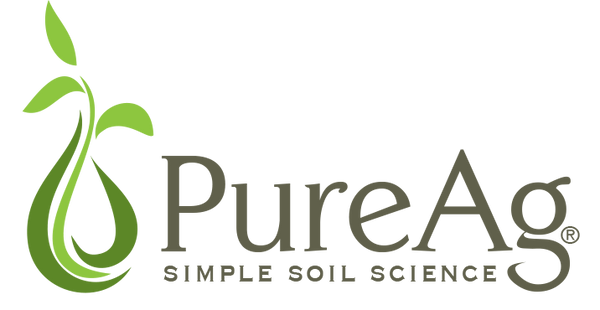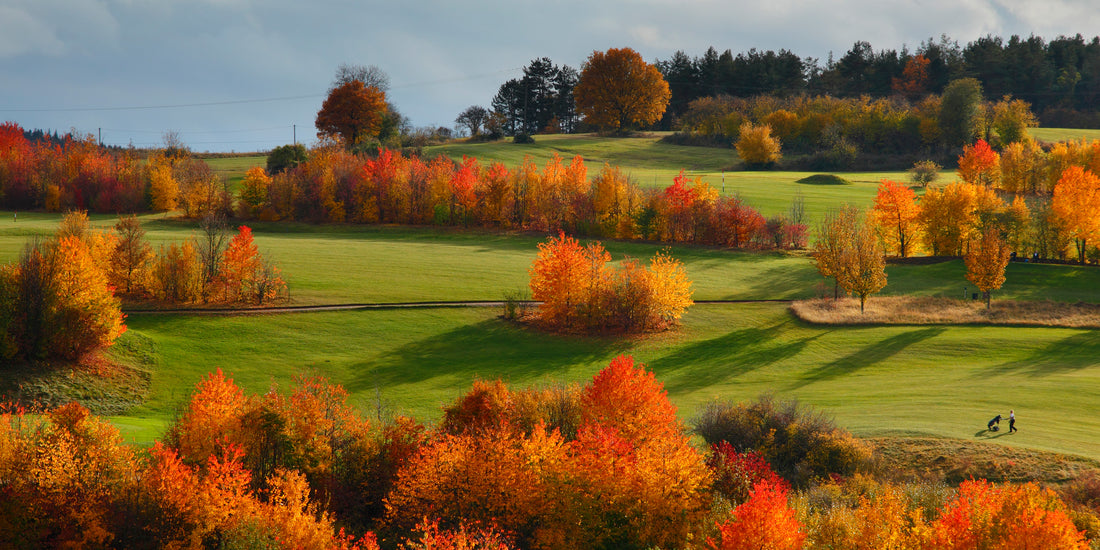PureAg offers a range of biological control products designed to address common fall turf issues on golf courses, such as frost damage, thatch build-up, disease pressure, leaf litter, cooler temperatures, soil compaction, overfeeding, winterizing, and nutrient management. Incorporating PureAg Products into your turf management program helps maintain healthy, disease-resistant turf while promoting sustainable soil health and microbial balance.
1. Enhanced Disease Suppression2. Improved Soil Structure and Drainage
Drainage: Well-structured soil allows excess water to drain more effectively, which helps prevent conditions favorable for disease development, such as prolonged moisture on the turf surface.
3. Increased Nutrient Availability
Mycorrhizal Networks: Mycorrhizal fungi form symbiotic relationships with grass roots, enhancing nutrient and water uptake. Healthier turfgrass is better able to withstand stress and resist diseases.
4. Root Health and Growth
Disease Resistance: Some soil microbes produce growth-promoting substances that strengthen plant defenses, making the turfgrass more resilient to disease attacks.
5. Competition with Pathogens
Biofilm Formation: Certain beneficial microbes form biofilms on soil particles and plant surfaces, creating physical barriers that can inhibit pathogen colonization and reduce infection rates.
6. Enhanced Decomposition of Organic Matter
7. Improved Stress Tolerance
Practical Tips for Promoting Healthy Soil Microbial Communities:
By fostering a robust soil microbial community, golf course managers can enhance the overall health and resilience of turfgrass, thereby reducing the risk and impact of fall turf diseases.
PureAg Product Precommendations for your Fall Turf Program
Implementing these biological controls typically involves integrating them into a broader turf management strategy that includes proper cultural practices and regular monitoring. Regularly assessing turf health and needs will help identify the most effective biological control methods. Tailoring management practices to fall conditions can mitigate issues and ensure the golf course remains in excellent shape as it approaches the winter months.
It improves soil structure, increases nutrient uptake, enhances root development, leading to better stress tolerance and reduced common fall turf issues. The product also accelerates the decomposition of organic matter and supports a balanced soil ecosystem, which helps in managing and preventing turf diseases. Applied in early to mid-fall, it integrates seamlessly with other maintenance practices to optimize turf performance and resilience.
Enhances soil health and turfgrass performance by stimulating root development, improving soil structure, and increasing nutrient availability. The trichoderma fungi in the blend promote robust root systems, enhance aeration and drainage by breaking down organic matter, and act as biological control agents to suppress harmful soil pathogens and diseases. These fungi can outcompete or antagonize pathogenic fungi, effectively reducing disease pressure.
Endomycorrhizal fungi form symbiotic relationships with plant roots, significantly increasing the surface area for nutrient and water absorption, which improves root development and boosts overall plant growth. Ectomycorrhizal fungi, on the other hand, form a protective sheath around roots, enhancing soil structure and helping the plant resist drought and disease. Together, these fungi improve soil health by aiding in organic matter decomposition, promoting nutrient uptake, and creating a more resilient root system. This comprehensive support allows turfgrass to better withstand environmental stress, resist diseases, and thrive in a variety of conditions.
These bacteria enhance nutrient availability by breaking down organic matter, which supports more vigorous root development and improves soil structure. The bacillus strains in the blend contribute to disease suppression by outcompeting harmful pathogens and producing natural antimicrobial compounds. This not only helps to protect turfgrass from common diseases but also promotes a balanced microbial environment in the soil. Supports the creation of a healthier, more resilient turfgrass that is better equipped to withstand environmental stress and thrive in various conditions.
Designed to combat nematode infestations in the soil using biological methods. This product leverages beneficial microorganisms that specifically target and suppress harmful nematodes, reducing their population and minimizing damage to turfgrass roots. Enhances soil health and promotes a more resilient root system, which improves overall plant growth and stress tolerance. This biologically-based approach not only helps manage nematode issues effectively but also supports a balanced and sustainable soil ecosystem, contributing to a healthier and more robust turf.

